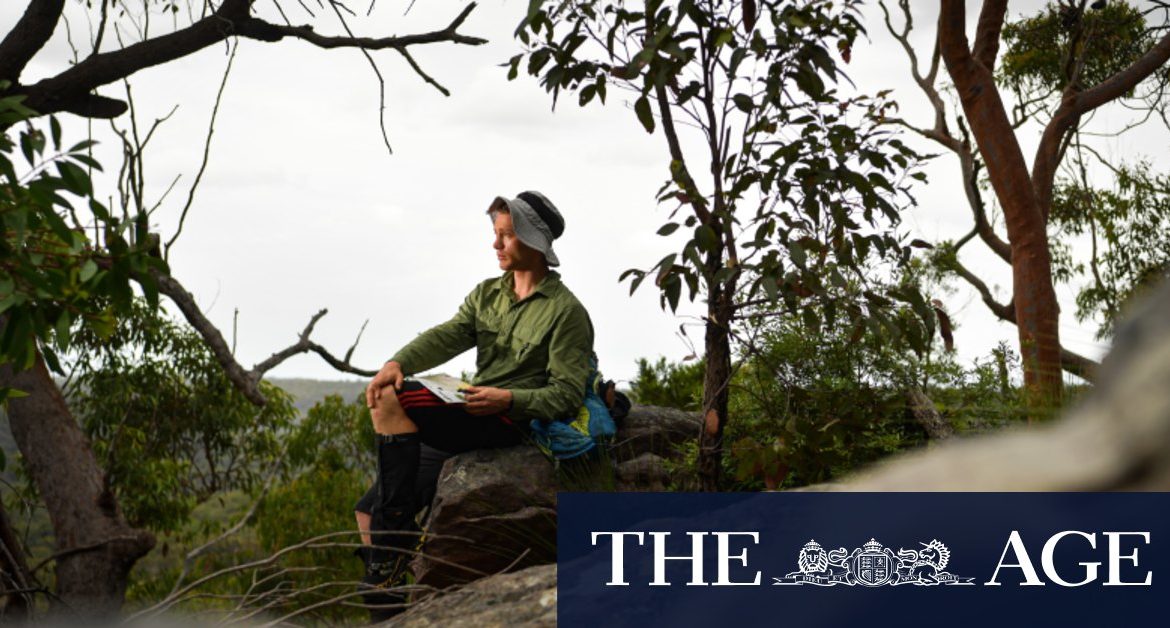Like in orienteering, participants in a rogaine must navigate their way across challenging terrain and locate checkpoints. Competitors typically have minimal food and water and carry only an analogue compass, a map and a head torch.
“The top level rogaines go for 24 hours non-stop, and you cover anywhere from 50-100 kilometres in that time,” says Tristan White, the 27-year-old communications officer of NSW Rogaining, who began competing at the age of 18.
Checkpoints are scored depending on their accessibility, with some of the hardest located in dense gullies, in the middle of rivers and even on the edge of cliffs, involving vertical climbs.
“Your team decides on what checkpoints you’re going to shoot for, then you aim to get as many of them as possible … There’s no time for sleep,” White says.
“The first time I did a rogaine was one of the most tiring experiences of my life… I experienced everything from hallucinations, to cramps, headaches, confusion – it was very intense.”
January is a busy time for training, with the end of February marking the start of the 2021 events, including several shorter 6-12 hour “minigaines”.
Mike Hotchkis, a veteran NSW rogainer, says the sport melds particularly well with the Australian landscape. “We have these thick areas of bush, with virtually no tracks … and you can crisscross it unimpeded,” he says.
The sport was founded in Melbourne in 1976 by three Scouts who combined various elements of orienteering events, as well the first syllables of their names (Rod, Gail and Neil), to come up with the term “rogaine”.
Organised events quickly followed and then spread overseas, reaching South Africa, Japan and across Europe, finding a particularly big audience in Estonia and Russia. The last world championships, held in Spain, saw more than 380 teams compete.
Melbourne-based rogaining co-founder Neil Phillips believes part of the sport’s appeal is its accessibility in terms of age – with even some people over 80 competing – and cost.
“It’s 100 per cent more accessible for people looking to join in than other adventure sports,” says Phillips.
Loading
“You don’t have the peer pressure to have all the best gear like you might in say, cycling … all you need is a pair of running shoes.”
White adds that committing time to keeping fit is key. “But generally speaking you just need to be able to run well and stay mentally positive,” he says.
Finding a growing audience worldwide, rogaining competitors believe it holds all the cards when it comes to recognition on an international stage.
The recent inclusion of break-dancing in the Paris 2024 Olympic Games prompted a mixed reaction in the sporting world but also raised the question of which events could follow suit.
The International Olympic Committee recognises orienteering as a sport but it has yet to be included as an event at the summer Olympics. As rogaining is an extreme sub-branch of orienteering, rogaine enthusiasts are keeping a close eye on the progress.
“If the Olympics were to take in orienteering, rogainers would definitely be among the athletes competing,” Phillips says.
Get a little more outta life
Start your week with practical tips and expert advice to help you make the most of your personal health, relationships, fitness and nutrition. Sign up to our Live Well newsletter sent every Monday.
Most Viewed in Lifestyle
Loading







